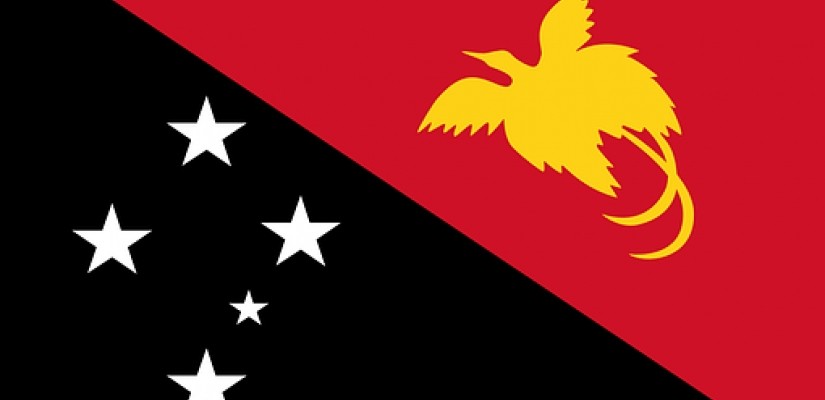Home to roughly 300,000 people, Bougainville is an autonomous region of Papua New Guinea (PNG) in the Pacific Ocean that attracts little attention in international media. Bougainville’s forthcoming referendum on independence from Papua New Guinea, however, could entail financial and strategic risks that could affect the larger Asia-Pacific region. China, the United States, and Australia all have a stake in the future of Bougainville.
From November 23 to December 7, 2019, Bougainville’s population will have the opportunity to vote on whether the autonomous region should gain complete independence from Papua New Guinea’s government. Surveys indicate that the majority (65% and above) support Bougainville’s independence. Despite this outlook, PNG’s parliament will have to ratify the outcome of the referendum before further steps can be taken. While the people of Bougainville have fought for independence for decades, poorly planned decoupling from PNG could create risks for Bougainville’s economy.
At the center of Bougainville’s independence debate is Panguna mine, which harbors one of the largest copper deposits in the world. Panguna mine became an economic lifeline for PNG’s national government in the 1970s and 1980s. Earnings from the copper mine accounted for approximately 45% of PNG’s export income, 17% of its internal revenue, and 12% of its GDP. During this time, the mine was highly profitable, but only about 5% of revenue generated from the mine stayed in Bougainville, with the majority being sent to PNG’s central government. Eventually, this inequality, in addition to environmental damage caused by the mine, resulted in a civil war between Bougainville’s guerilla army and PNG forces. This conflict claimed 20,000 lives and led to the closure of Panguna mine in 1989. The conflict officially ended in 2001 when a Peace Agreement was signed by Bougainville and PNG.
At present, Bougainville lacks the fiscal self-reliance that would support its independence. Internally generated revenue from company taxes, customs duties, and value-added taxes are insufficient to cover Bougainville’s expenditures. Bougainville’s government reportedly needs approximately 300 million kinas ($88 million) to run efficiently. In 2017, however, only a small share of its recurrent budget of 162 million kinas ($48 million) was generated internally. Estimations suggest that only about 21 million kinas ($6 million), or 13%, of this budget was covered by domestic earnings. Therefore, Bougainville depends heavily on funds from PNG and other stakeholders, such as Australia, which reportedly contributes $50 million annually. Organizing and funding Bougainville’s independence referendum would also not have been possible without the financial support totaling $7 million from the US, Australia, New Zealand, and Japan.

The success of Bougainville’s independence largely depends on the improved management of taxes and rents. This issue raises the question of whether Panguna mine should be reopened in the future to increase long-term self-sufficiency. An independent Bougainville is likely to see an opportunity in mining and mineral rents, yet it must be mindful of recurrent conflict and security risks surrounding Panguna mine. Scientific research suggests that revenue opportunities can also be found in Bougainville’s agriculture sector. Fishery rents, marine exports, onshore tuna processing, and cocoa production could supplement earnings from the mining industry. Foreign direct investment could also boost Bougainville’s economic development and improve technological standards. Furthermore, expanding employment and training a skilled workforce are additional vital components for development and fiscal growth in Bougainville.
From a strategic point of view, China, the US, and Australia all have a stake in Bougainville’s independence. Seeking to expand its Belt and Road Initiative globally, China is likely to pursue economic cooperation with, and investment in, Bougainville. In September and October 2019, the neighboring Solomon Islands and Kiribati have shifted cooperation from Taiwan to China, increasing China’s economic network in the Pacific Ocean. This leaves Nauru, Tuvalu, Palau, and the Marshall Islands as the few regions that associate with Taiwan rather than China at present.
The US is likely to regard China’s increased presence in Oceania with skepticism. Aiming to limit China’s breadth of influence in the Pacific, the US could view China’s potential engagement in Bougainville as a security concern due to Bougainville’s strategic location between Asia and America. Australia will align with the US on this issue. Australian authorities have stated that they would accept the outcome of Bougainville’s independence referendum but are cautious about Pacific islands strengthening ties with China. Furthermore, Australia will continue functioning as a mediator and peace broker in Bougainville’s affairs.
While Chinese investment through loans and aid can spur economic growth, countries like Sri Lanka, the Maldives, Laos, and Pakistan are now struggling with Chinese debt. Therefore, Bougainville must ensure that future development projects do not entirely depend on foreign support. Assuming that Bougainville gains independence in the future, it is highly likely that Bougainville will continue to depend on foreign assistance from Australia and other states shortly after it has achieved independence. Identifying potential internal sources of revenue and assessing its financial dependence on other states is therefore crucial if Bougainville seeks sustainable fiscal development and a firm standing as an international trading partner.
